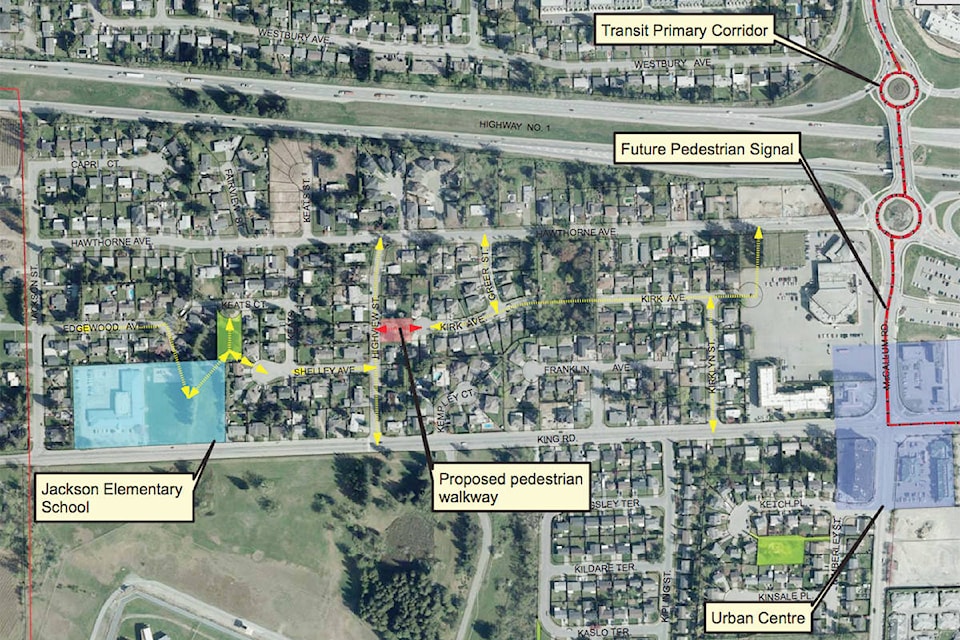Council has pushed forward with a demand that two property owners build pedestrian walkways if they want their lands subdivided.
One case involves a man who hopes to split a Highview Street lot, build a home on one of the properties and sell the other. The other centres around a vacant Old Yale Road property that the owner hopes to split five ways in order to build three duplexes and two single-family houses.
In both instances, many residents of the affected neighbourhoods said they didn’t want the walkways, and Couns. Bruce Banman and Les Barkman asked for the removal of the requirement. But the rest of council said the paths are important parts of the long-term goal to increase pedestrian connections around the city and improve Abbotsford’s general walkability.
The owner of the Highview property had bought a lot with a home on it after a meeting with city officials where it wasn’t mentioned that subdividing the lot might trigger a future demand for pedestrian access through the property. That walkway, he learned later, would make it impossible to build secondary suites in the two homes. He also said he was worried people might frequent the walkway to use drugs.
RELATED: Surprise demand from city leaves Abbotsford man frustrated
To address the secondary suite issue, council agreed to shrink the required size of the walkway. That, along with a change in the ownership structure, will allow secondary suites in both homes.
“For me it feels like a win that will allow him to achieve what he wants to,” Coun. Sandy Blue said.
But Banman said the requirement for the walkway should be abandoned, given the lack of enthusiasm by nearby residents and the fact that the city demand wasn’t revealed to the property owner until after the land was purchased.
“I don’t know that we necessarily have the moral authority on this one to follow through with this case to force this on this particular individual,” he said.
Mayor Henry Braun, though, said switching course would set a bad precedent and encourage developers around the city to try to escape the capital demands frequently made of them during the rezoning process.
“I think for us to throw out the walkway, we will have all sorts of things thrown at us – not only on the two-lot splits but by the development community in general,” he said. Braun said city requirements frequently evolve during the development application process.
And he urged non-professionals to seek out advice before looking to develop a property.
“I just caution people who have never developed anything: be careful of what you are purchasing.”
The owner of the property said he was not satisfied with the amendment shrinking the walkway. He wrote to The News that he purchased the house in order to move away from the “busyness” of his family’s current home.
On the Old Yale property, residents expressed concerns that relocating the existing walkway towards a property line would result in the removal of trees and compromise the ability of one homeowner to use her driveway.
But Rob Isaac, the city’s engineering general manager, said neither should be the case.
And while several speakers at a public hearing had said it wouldn’t improve their access to Old Yale Road, Coun. Dave Loewen argued the walkway could help those who head in the opposite direction from other nearby streets.
“If we are to design a walkable city, I see this catwalk as being quite critical to that whole neighbourhood, not just that one street,” Loewen said.
Coun. Ross Siemens agreed.
“If we say no to this and take it out, then we have to have a complete review of our whole policy on walkways,” he said.
@ty_olsen
Do you have more information? Email: tolsen@abbynews.com
Like us on Facebook and follow us on Twitter
